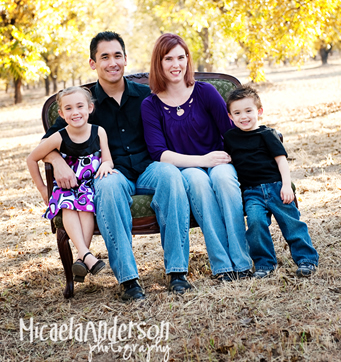 As a former division 1 college soccer player with a master’s degree in exercise science, Ken Urakawa wasn’t about to spend the rest of his life pumping out mindless reps on the bench at a franchise gym.
As a former division 1 college soccer player with a master’s degree in exercise science, Ken Urakawa wasn’t about to spend the rest of his life pumping out mindless reps on the bench at a franchise gym.
Which is why the athletic, performance-driven model of CrossFit appealed so much to him.
Now, this father of two spends his days putting his clients through some of the most arduous and unconventional workouts around. On any given day in Tempe, Arizona his members are climbing ropes, lifting tractor tires, swinging sledge hammers, tossing medicine balls, holding half-filled beer kegs above their heads, and running 400m repeats till they can’t see straight.
At first glance, describing the workout space of CrossFit Southwest as a “gym” might seem like a bit of a stretch. Phrases like “medieval torture chamber” and “Soviet-era Gulag” seem like better descriptions.
As CrossFit continues to explode in popularity, Ken took the time to explain why CrossFit might soon become the workout of choice for wildland firefighters.
* Bonus * Firefighters get discounted membership packages. Stop by the Gym for more info about rates and packages. 2027 East Cedar Street Tempe, Arizona 85281.
HF: Tell me a little bit about how you got involved with CrossFit?
KU: Honestly, it was completely backdoor. I was working at 24 hour Fitness and a friend and I decided to open up a place. We had heard about franchises as a mutual friend had just opened up a Pita Pit franchise (franchisepitapitusa.com) and decided that would be the best route for us too. We were unsure where to start to begin with; I suggested Anytime Fitness but my friend was very interested in the Ninja Nation Franchise. So, after discussion, we decided to open up an Anytime Fitness franchise, and we had some financial backers lined up, but as we were getting ready to open up, one of the guys backed out. So, we dropped the franchise idea and opened up our own place. We found a nice industrial space and set up shop. A short while later, one of our friends asked if we’d ever heard of CrossFit, and that’s how it started.
My background is much more oriented towards strength and conditioning versus bodybuilding. So I was already doing Olympic weight lifting and kettlebells – a lot of the stuff that CrossFit already incorporates, so it was a pretty easy sell.
HF: What’s your educational background?
KU: I have a master’s degree in Exercise Science from Arizona State University. I got into personal training while I was a graduate student, and loved it. I received my bachelor’s degree from Butler University, and I played varsity soccer all four years.
HF: What attracted you to CrossFit? What did you like about it?
KU: The biggest attraction was CrossFit’s focus on performance over any sort of appearance-based stuff. I mean, there’s definitely some folks who do CrossFit for the abs, but CrossFit incorporates so many different elements like Olympic weight lifting, gymnastics, traditional weight lifting, calisthenics, body weight movements, rowing, climbing, everything really. It combines all those things into a coherent program. Most importantly for me, it’s just fun to do.
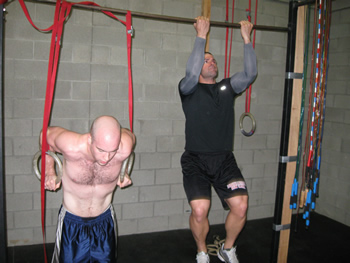 HF: For firefighters on a type 1 hotshot crew, endurance is probably the most critical strength they must have. With CrossFit’s emphasis on diversity in training, do you feel that a hotshot would get the level of endurance training that he or she needs by doing a CrossFit workout?
HF: For firefighters on a type 1 hotshot crew, endurance is probably the most critical strength they must have. With CrossFit’s emphasis on diversity in training, do you feel that a hotshot would get the level of endurance training that he or she needs by doing a CrossFit workout?
KU: There’s two things to consider with CrossFit. Number one, the types of workouts that we do tend to be more sustained effort vs. traditional muscle and fitness style lifting. Where you do eight reps, get a drink, do eight more reps, talk to the girls, flex, etc. we tend to do a lot more work capacity tests anyways. We also tend to do a lot more high-intensity workouts, so you’re working at or near your redline for the entire session, which will carry over to other activities that you’re doing, like firefighting. By all means, though there’s some additional training that firefighters should be doing besides CrossFit. If you’re going to be out for five or six days, 24/7 fighting a fire, you want to be doing some other things to prepare your body for the pounding it’s going to take. What CrossFit does is lay a foundation of strength, power, endurance, and coordination, so that you can do fewer miles, or fewer laps, and still maintain or improve your level of fitness. What’s great, I think about CrossFit for firefighters is that you can be doing these workouts during the season. Many of them only take about 25 or 30 minutes. That’s one of the biggest advantages of CrossFit. You don’t have to go out and run five miles, then do a weight program.
HF: Walk me through a random day at your gym – what can a person expect?
KU: It varies depending on what the primary workout is. Take today, our primary workout was front squats. Because it was a strength workout day, we did a more active warm-up. So we had people jumping and climbing ropes, doing back extensions, and some other mobility and flexibility stuff. Then they did their strength work, and then they finished up with essentially a 12 minute program. 30 seconds of work, 30 seconds of rest, and 5 different movements. So we ran through air squats, body weight squats, box jumps, push-ups, and an overhead press with a bar. People would do as many reps as they could in that 30 seconds, then rest, then move on to the next exercise.
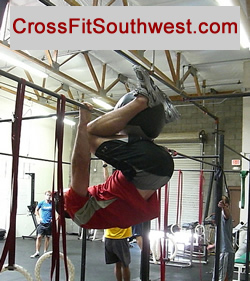 Other days, we’ll have a workout where the main workout is 10, 15 or 20 minutes of fairly horrible stuff. On those days, the warm-up might be more skill-related. So we might work on gymnastic skills, or Olympic weight lifting drills. With the assumption being that you’re going to be working plenty hard during the main workout, so we don’t need to kill you during the warm-up. But then other days we just kill you the whole time, and then send you home. I guess it just depends on the day and our mood.
Other days, we’ll have a workout where the main workout is 10, 15 or 20 minutes of fairly horrible stuff. On those days, the warm-up might be more skill-related. So we might work on gymnastic skills, or Olympic weight lifting drills. With the assumption being that you’re going to be working plenty hard during the main workout, so we don’t need to kill you during the warm-up. But then other days we just kill you the whole time, and then send you home. I guess it just depends on the day and our mood.
HF: How long does the average session last?
KU: All the classes are an hour. That includes the warm-up, and usually some time to do a cool-down. There will be days when the actual workout itself lasts less than three minutes for some people. Some of the workouts are designed where there’s X amount of work, and you have to get it done as quick as you can. So the first person might be done in 3 minutes, the last person might take 15 minutes to finish. Other days, you might have 20 minutes to get as much work done in that 20 minutes as you can. So say, 2 movements, and you have to do 15 reps of this, and 15 reps of that, and you try to get through that cycle as many times as you can in 20 minutes. So the top performers might get through 20 or 21 cycles, but others might only get through eight cycles. So everyone’s still working throughout the entire 20 minutes, but you’re not trying to keep up with the power-lifting guy, or the triathlete guy. You’re only concerned with measuring your own performance.
HF: You mentioned a lot of triathletes come to your gym to train. Do they rely on CrossFit exclusively to prepare them, or do they supplement their workouts with CrossFit?
KU: We’ve got people who do both. During the season, they do less CrossFit, and more specific training. But they can do fewer mindless miles, and instead focus on sprint work on their bike, or on improving their swimming technique. Also, we tend to see a lot of strength gains with CrossFit, so triathletes will notice immediately that their performance on the bike will improve because they’re stronger, and that allows for more economy of effort. The stronger you are, the longer you can go with less effort.
There are people who have done nothing but CrossFit and then gone out and run marathons, or done triathlons, but there’s no substitute for specific training. What this can do is get rid of some of the conditioning, and some of the weaknesses. A lot of what we do is try to shore up some of the weaknesses that you have. Most people tend to be weak in the posterior kinetic chain (hamstrings, glutes, back, the pulling muscles). The things that you can’t see in the mirror. I mean, how often do you see deadlifts at 24 Hour Fitness? Or Kettle bells? A lot of the things that we do are things that cause people a lot of pain in the beginning because they’re just not used to working those muscles in their traditional workout routines. We do a lot of large scale movements like picking things up and carrying things around, and squatting things and pushing things, and pulling ourselves and other things versus isolation movements.
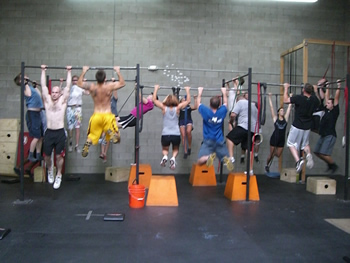 HF: What’s the Workout of the Day?
HF: What’s the Workout of the Day?
KU: The Crossfit.com workout of the day came to be because the original CrossFit gym in Santa Cruz, CA would do primarily Olympic weights and gymnastics, and then a finishing workout at the end of the day. And that turned into the Workout of the day. In theory, the Workout of the Day can be variable to the point of being completely random. The idea being that if your body has no idea what’s coming, it’s going to help you prepare for the unknown. The application of CrossFit is going to be different for everyone. There are some people who are going to do the posted Workout of the Day daily, and then go home. We tend to do a little bit more structured strength training here at CrossFit Southwest, and then we throw the more classic CrossFit metabolic conditioning workouts in. So we have some idea about what sort of strength training you’re going to be doing next week, but we don’t know exactly what it’s going to look like.
HF: What are the advantages of doing large scale movements versus traditional isolation exercises?
KU: Well, you get more coordination in your efforts, but you get better at movements, you also get larger responses physiologically. If you look at growth hormone and testosterone post exercise, you’ll see a bigger increase following a squat, versus an isolation exercise like a bicep curl, or a bench press or a tricep kickback workout. Just because you’re moving more things. Perfect example: a leg extension and a leg curl don’t equal a squat. Likewise, a leg press doesn’t equal a squat. All those muscles that are used in balancing while doing a squat aren’t used while you’re doing leg presses. If you pick a bar up, and bring it to your shoulders, then squat down with it, then lift it over your head, a.) that’s a lot of work, and b.) you’re working through that entire range of motion to avoid dropping something on your head or to avoid falling over.
HF: Hearing you say that, it makes sense intuitively that large scale movements would be best. But over the last 30 years, why has traditional weight lifting moved away from these large scale movements and towards isolation exercises like the bench press and bicep curls?
KU: Well, it’s a body-building derived model, and not a performance-based model. Thirty years ago, if you asked someone how much they can lift, they’d tell you how much weight they could stack on a bar and lift over their head. Then, a couple guys in Venice, CA realized that if you get a 2×6 plank, lean it against the wall at an angle, then fall back against it, you could lift more. So back in the ‘60’s and 70’s they had standing incline benches where you would bring the bar to your shoulders, fall back and lift from that position. Then, that evolved into seated incline presses, and eventually the YMCA got a hold of it, and turned it into the bench press, and now it’s a standard movement. It’s an evolution of a mentality.
Then you get Bally’s and 24 Hour Fitness, where their primary motivation is to avoid injury, avoid getting sued, and get people to pay their dues and not show up very often. It doesn’t help their business if someone says “Hey, you can do this without any supplements and with one bar at your house.” Not that there’s anything wrong with supplements when used safely. You can get them reasonably priced at places like steelsupplements.com/, and when taken according to instructions they usually help. Still, that’s one reason why CrossFit has experienced such explosive growth over these last few years because people are realizing “Hey, I don’t need to buy thousands of dollars worth of equipment to get results.”
What really drove CrossFit, in the beginning, was military and law enforcement types; people in Afghanistan and Iraq working out with gasoline cans and cement blocks and rocks, and it was the cool macho thing to do. Then it got mainstream.
One of the first CrossFit affiliates was started up in Seattle by a guy named Dave Werner, who’s a retired US Navy SEAL. I know that for awhile, Orange County was doing CrossFit into all their fire academies.
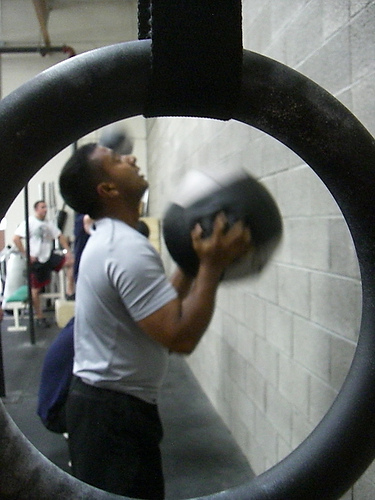 Some people really emphasize the eliteness of it all, like “this is the workout that the SEALS are doing,” while ignoring the fact that 90% of people who do it are just regular people who are bored working out at the gym and want to do something different.
Some people really emphasize the eliteness of it all, like “this is the workout that the SEALS are doing,” while ignoring the fact that 90% of people who do it are just regular people who are bored working out at the gym and want to do something different.
We have a few people here who are former military, a few law enforcement types, and a couple martial arts guys, but mostly our client base is your average person just trying to get into shape. A lot of them are former high school or college athletes who are bored stiff doing traditional stuff in the gym.
HF: How can someone get involved with CrossFit?
KU: The easiest thing to do is to go online and just start exploring it. Go to Crossfit.com, or our site CrossFitSouthwest.com. The single biggest thing you can do, especially if you’re not competent at doing the movements, is to find someone who can teach you how to do it. If you can’t deadlift correctly, you’re going to hurt yourself. If you’ve never done an Olympic weight lifting movement, spend two weeks here at CrossFit Southwest, or wherever, and find someone to teach you the basics. We do a fair amount of fairly unusual movements, like the parallelettes, the rings – we do stuff that most people aren’t familiar with. Plus, even if you played high school football, your coach probably taught you wrong. So take the time to educate yourself before trying to do the full strength workouts.
I mean, we’ll have people who are here for six months, or a year, who still don’t do the full-strength version of the workout. You need to be intelligent enough to say, Ok, I’m not ready, I can’t do this, or this will hurt me if I do it, without being a complete sissy about it, or hiding from stuff. You have to know your limitations.
That’s one of the big misconceptions I think people have about CrossFit, is that they picture it as this program that pushes people past the point of breaking, throwing up, that kind of stuff. It can be like that, I guess. But I don’t want people throwing up all over my gym! I don’t want to clean it up. It doesn’t encourage people to come back. It’s miserable but in a good way! Sometimes when my clients leave the gym, they have to throw up, the act of throwing up brings them great relief. Kinda weird I know. But apparently it’s a thing after a workout?
HF: If you wanted to build a CrossFit home gym, what would you recommend to get started?
KU: It really depends on budget. There’s people out there who have done it with spending next to nothing. They go on Craigslist and get a bar, go to Play it Again Sports, and get some weights, or use cinder blocks for weights. You can get a relatively decent set of plates and a bar for $200-300. The Olympic Rings are nice, because you can do pull-ups, and pulling-type exercises. If you don’t have a place for a pull-up bar, you can sling them over a truss or a tree limb. You can make the rings that we use fairly easily as well. Just get some PVC pipe, fill it with sand and heat it, and beat it into shape. (for more info on building your own Olympic Rings, check out this youtube video.)
Some people make do with just a kettle bell. It really depends on the bells and whistles. By design, the nature of the program is very minimalistic. You don’t need to have all the fun stuff. Bumper plates are great, so you can drop a bar and not destroy your floor. The mats we use in the gym are ¼” horse trailer mats. We picked’em up for about 2/3 of the cost of traditional gym flooring. Works just the same. Dumb bells are fairly inexpensive too. You can make your own medicine balls by filling up an old basketball with sand. Just poke a hole, stick a funnel in there, and fill it up. Then shove a plug of some sort in there with some adhesive and you’re set. It should be about 20lbs or so. It’ll last for awhile. If you don’t want to steal one from a kid, just go to goodwill and get one with a hole in it. The biggest expense is going to be the bar and the weights, but if you have something heavy to pick up, and a ring or a bar (or doorway) you can do 90% of the stuff.
HF: Talk to me about some of the running workouts that you?
KU: It varies. We tend to stay away from some of the longer runs because I don’t like them, and my business partner Matt Lucas doesn’t like them either. We’ll throw’em in occasionally, but we tend to stick to workouts that are 800m (1/2 mile) or under. We’ll do miles occasionally, but mostly we do intervals or repeats. We could do something where it’s just run as fast as you can for a certain amount of time, then rest for x number of minutes.
Because CrossFit is really random in its workouts, it’s often times difficult to track progress, so with some regularity they’ll put out named workouts on the website that serve as benchmarks. So when “Helen” comes up, it’s a 400m run, 21 swings with the kettle bell, 15 pull-ups, three times as fast as you can go. So you can see how your performance increases over time. There’s one where you do a 400m run, and then 15 overhead squats with 95lbs over your head. You can rest whenever, but you have to complete the 15 squats before you can go on to the next round. The better you are at that, the stronger your shoulders, and hips are, and the quicker you’ll get done. If you have someone who is training for a particular sport or speciality, then you can lean a little more in a specific direction. The basic premise of doing enough to get good at a lot of stuff applies to pretty much everything.
So, for forest firefighting, you might want to do more carries. Farmer’s walks, suitcase carries where you have just one weight and you go for 400m in the same hand, or drag a tire. We have a lot of structural firefighters that come in here, and a lot of guys who come in to train for the CPAT. We know what’s on that test, so we can train specifically for it. We know you’re going to run up this, drag this, and hit this with a hammer. So we can simulate the actual events. If you’re a cop, odds are you’re not going to chase a guy on foot for 2 miles. Most of the time it’s 400 or 500m. So we focus on that. The jujitsu guys that we work with, we do a lot of grip work, a lot of pulling and core work. We don’t do as much classical power lifting. Point is, everyone is going to benefit from becoming more well-rounded and having a higher general base of conditioning.
HF: Does CrossFit offer any dietary suggestions?
KU: There are suggestions, but we are not registered dieticians, so we’re not allowed to make prescriptions. A large segment of CrossFit folks do either a Paleolithic diet, or the Zone. It’s a 40/30/30 diet (carbs, proteins, friendly fats). Although I’ve seen more people have good success with the Paleo-style of eating, where they’re not weighing and measuring. The idea is lots of vegetables, lean meats, some fruit, nuts and seeds. You usually see such a huge improvement in how you feel and how you perform that it’s motivating enough to maintain it. But it’s like anything else – 60% is better than nothing. So if you can get your breakfast in line with Paleo, then a month down the road work on lunch, then a month down the road work on dinner, then you’re good. That’s the direction that I generally send people in.
If people have specific weight loss needs, we’ll usually suggest they look at a zone style of eating with Paleo foods. So food quality AND food quantity are being accounted for.
HF: What are some mistakes that people new to Crossfit make?
KU: The biggest mistake you see is people trying to do too much, too soon, without the proper form. They don’t have the foundation to be able to do a 300lb deadlift, but by God, the guy next to me did, so I’m going to try! Competition can be dangerous, and CrossFit tends to attract competitive people. But the most important thing you can do is learn to do the exercises right before you think about doing it fast, or heavy, or as hard as you can.
HF: Tell me a little bit about the competitions that you run here at the gym?
KU: One of the beauties of Crossfit is that you tend to score every workout in some way. Whether it’s by time, rep, or points. That’s the genius of Greg Glassman, and what he came up with. He turned every workout into a competition. So, for instance, today’s workout we went from front squats, to how much weight can you pick up, and you’re pretty well limited there, but then the next part of it, it’s how many reps can you do in this amount of time? That’s a lot easier to push yourself a little bit harder and try to keep up, or beat the guy next to you. Especially when you’re recorded every round, you can see how you’re doing, and how everyone else around you is doing. It’s really motivating to see some little girl kicking your butt. That’s one of the reasons that CrossFit became (and is still becoming) so popular. It takes advantage of that competition. It’s a timed event. It counts every rep, every second, and you know who’s first, second, third, fourth and last. It’s quantifiable.
HF: For our readers who live in the Phoenix / Tempe / Scottsdale / Chandler area and want to come down to CrossFit Southwest to check it out, what sort of packages and rates do you offer?
KU: For the group classes, we do everything monthly, and we have discounts available for law enforcement officers and firefighters. It ranges anywhere from $96/month (2 classes/month, 8 classes/month) to $144/month for unlimited access to the gym. We’re here 6 days a week, and you can come anytime you want. A lot of times people will come twice a day, once to a specific training class like an Olympic weights or endurance session, and then go to a general workout session afterwards. We have open gym every day, so a lot of people will come during open gym, and then stick around for the class afterwards.
A lot of people really enjoy it. And for the people that enjoy it, it’s really addicting, and they get really into.
HF: It seems like you have a great operation here, thanks for taking the time to show us around!
KU: We have fun, and that’s the big thing for me.
Well, Ken thanks for taking the time to show us around, best of luck!
If you’re ever in the Tempe, Arizona area and want to check out Ken @ CrossFit Southwest, we’ve provided a map below. Also, bring your redcard in or other proof that you’re a firefighter and he’ll toss a little discount your way. Just tell’em Hotshot Fitness sent you over!
[googlemap address=”1848 E University Dr, Tempe, AZ 85281″ zoom=12]
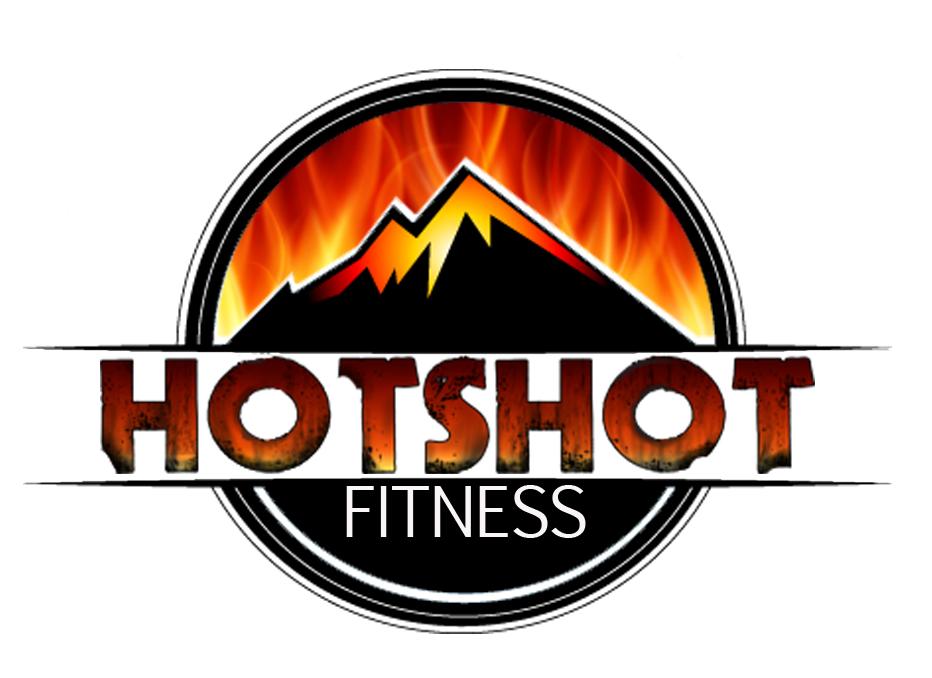
1 Comment
Crossfit Lifeforce has helped me in ways i never would have imaenigd Jon and Steve are great the people are awsome and the workouts are so much better then going to the gym, lifting weights, and running on treadmills.i lifted weights for most of my adult life and i say every day i wish crossfit was around when i was younger.If your stuck in limbo need a more intense workout or just maybe on the fence a bit about crossfit JUMP over that fence and come join us at Crossfit Lifeforce i promise you your going to love it.